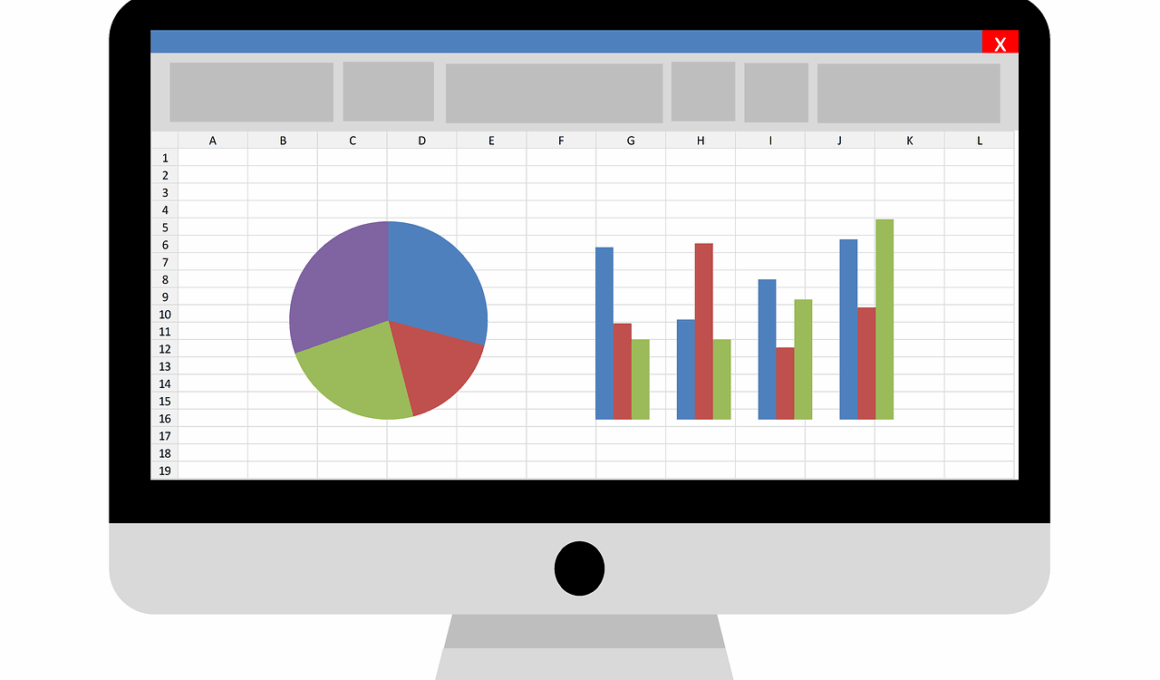The Importance of Forecasting in Operational Finance
Forecasting in operational finance is a critical component that allows companies to make informed decisions. By predicting future financial trends and performance, organizations can allocate resources efficiently and effectively. Using quantitative methods, forecasting provides insights into expected revenue, expenditure, and capital requirements. Effective forecasts enhance visibility into financial operations, empowering management to strategize proactively. A well-constructed forecast helps assess the viability of business plans and identify potential risks. Techniques such as trend analysis, market research, and regression analysis contribute to creating accurate forecasts. These insights drive better budgeting and financial planning, ensuring that companies remain competitive. Moreover, timely forecasts help establish benchmarks that guide organizational performance. As businesses navigate economic uncertainties, robust forecasting becomes indispensable. Not only does it inform daily operations, but it also aids long-term strategic growth. Stakeholders rely on these forecasts to make investment decisions, understanding future cash flows and profitability expectations. Thus, the role of forecasting in operational finance cannot be underestimated—it lays the foundation for sustainable organizational growth and resilience in fluctuating markets.
Forecasting stands at the crossroads of data analytics and financial strategy, bridging the gap between historical performance and future potential. An effective operational finance forecast incorporates various data sources to model expectations accurately. It combines both internal sales data and external economic indicators to create a comprehensive view. This multifaceted approach considers diverse factors such as market trends and consumer behavior, aligning closely with the organization’s strategic objectives. Additionally, employing refined analytical tools allows for real-time adjustments to be made in answers to shifts in market conditions. Organizations can choose from various forecasting models, including time series analysis or econometric modeling, depending on their specific needs. As much as these models lean on statistical analyses, they also benefit from qualitative insights gathered from experts and field staff. Regularly updated forecasts enable businesses to stay agile, responding swiftly to changes in demand or competition. A dynamic forecast informs management decisions and helps to mitigate potential risks tied to economic changes. Ultimately, effective forecasting cultivates a culture of accountability in financial operations, making it possible to evaluate success against established targets.
Techniques for Effective Forecasting
Several key techniques exist to enhance the accuracy and reliability of forecasts in operational finance. Utilizing historical data analysis remains one of the most common practices in forecasting processes. By examining past performance metrics, finance teams can identify patterns and trends that might repeat in the future. Another significant approach involves market research—understanding shifts in consumer preferences can also guide feasible projections. Surveys, focus groups, and other tools can be conducted to gather essential qualitative data that complements quantitative methods. Computer software tools offer powerful support for analysis, making complex calculations simpler and more efficient. Predictive analytics and machine learning techniques are gaining prominence. These methods enable organizations to process vast amounts of data, leading to better-informed forecasts based on statistical models’ insights. Additionally, scenario planning represents another valuable technique, allowing businesses to assess multiple potential futures based on varying assumptions and variables. This flexibility nurtures a forward-thinking culture and encourages proactive responses to different circumstances. By integrating these diverse techniques, businesses can produce robust forecasts, reinforcing both operational effectiveness and financial certainty.
In an increasingly volatile economic landscape, the value of accurate forecasting cannot be overstated. Companies leveraging forecasting can make strategic adjustments before adverse conditions arise. This proactive approach allows operational finance teams to analyze various scenarios and adapt to external changes swiftly. For instance, during economic downturns, updated forecasts guide organizations in optimizing resource allocation by cutting unnecessary costs without jeopardizing core operations. Moreover, accurate forecasting fosters better collaboration across departments, aligning marketing, sales, and supply chain teams toward common financial goals. Such coordination becomes crucial for enhancing overall efficiency and effectiveness. Furthermore, communication remains key; sharing forecast assumptions and variables with stakeholders fosters transparency and builds trust among team members. An agreed vision contributes to collective accountability for outcomes, promoting a shared commitment to achieving financial targets. In this regard, board members and investors are more inclined to support initiatives backed by well-articulated forecasts. Consequently, businesses that prioritize forecasting are better prepared to seize growth opportunities and navigate challenges successfully. As stakeholders increasingly demand reliable financial insights, accurate forecasting will continue to be a valuable asset for operational finance departments.
The Challenges of Forecasting
Despite its critical importance, forecasting in operational finance does experience inherent challenges. One significant difficulty arises from the need for high-quality data, as inaccuracies can distort forecasts considerably. Companies must implement rigorous data collection practices to ensure reliability. Additionally, rapidly changing market conditions lead to uncertainties that traditional forecasting models may not address effectively. This unpredictability complicates the predictive landscape, requiring finance teams to stay agile. Variability in consumer behavior further complicates matters, where sudden shifts in preferences can catch organizations off guard. Consequently, finance professionals must remain continuously aware of the market signals and factors influencing economic shifts. Moreover, integrating cross-departmental insights can be challenging, as different teams may employ varying methodologies or tools. Establishing standardized forecasting processes is essential to unify data interpretation and analysis. Resistance to change among stakeholders can also hinder the adoption of advanced forecasting technologies. Addressing these challenges head-on ensures stronger alignment between forecasting outcomes and business strategies. Organizations that can tackle these hurdles effectively will enhance their forecasting capabilities and drive more informed financial decisions, ultimately supporting sustainable growth.
Another challenge worth mentioning is the dependence on human judgment within the forecasting process. While data-driven insights are critical, human factors can introduce biases that impact accuracy. Forecasting often relies on managers’ experiences and perspectives, which can skew expectations. Organizations should therefore incorporate technology that minimizes subjective interpretations, enhancing objectivity in forecasting. Moreover, developing a culture of continuous learning in forecasting practices proves invaluable, as employees can refine their skills and improve the methods used. Regular training sessions provide the necessary foundation for teams to stay abreast of best practices in data analysis. Collaboration with data scientists can further enrich traditional financial forecasting approaches, providing an analytical edge to qualitative insights. By embracing this hybrid approach, operational finance teams can navigate the dynamic landscape more proficiently. Enhancing forecasting processes creates greater resilience against unexpected changes, enabling firms to maintain operational efficiency. Additionally, fostering stakeholder engagement ensures buy-in for forecasts presented, improving accountability for results. Therefore, effective operational finance forecasting not only enhances performance but promotes a stronger, more adaptable organizational culture.
Conclusion: The Future of Forecasting in Operational Finance
Looking ahead, the future of forecasting in operational finance appears promising, particularly with advancements in technology. The rise of artificial intelligence and machine learning has transformed how forecasts are constructed and implemented. These technologies offer the capability to analyze vast datasets quickly and accurately, leading to enhanced forecasting performance. As algorithms become more sophisticated, they will continue to improve the reliability of financial projections. Automation also plays a big role, streamlining processes and reducing the manual workload associated with forecasting. This evolution allows finance teams to focus on strategic initiatives rather than getting bogged down in data entry and analysis. Furthermore, the integration of real-time data streams and dashboards supports agile decision-making, ensuring organizations remain responsive to changes. In this digital age, forecasting will evolve from static reports to dynamic tools that provide ongoing insights. Collaborating with data scientists and incorporating advanced analytics tools signifies a significant step towards modernizing forecasting practices. Ultimately, adopting such innovations prepares operational finance departments to face future challenges more dynamically and effectively.
Consequently, as operational finance continues to adapt to an evolving landscape, forecasting plays a central role in guiding organizations towards success. The emphasis on agility and innovation in forecasting practices will not only define competitive advantages but also shape the future of corporate finance as a whole. In essence, effective forecasting in operational finance stands at the intersection of strategy, technology, and data. By embracing emerging trends, organizations can create a sustainable path to growth and ensure their continued relevance in a rapidly changing market. The commitment to refining forecasting methodologies fosters a culture of excellence driven by informed decision-making. As such, companies dedicated to comprehensive forecasting processes will not only enhance their financial performance but also drive long-term strategic success.


